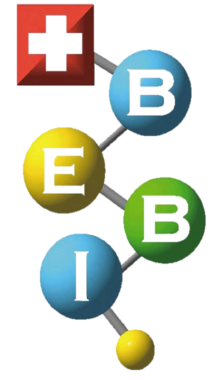Researches
Biomedical Electronics Group
The Digital Signal Processing and Statistical Signal Processing Laboratory focuses on signal processing theory and its technological applications in medicine. For example the vibration signal generated by the human knee joint and the temporomandibular joint disease, the application of signal processing theory, the R & D to establish the mathematical model of vibration signal technology to assist in the diagnosis of human joint disease patterns and types of clinical analysis, and to provide the doctor with correct and necessary medical information.
Magnetic Resonance Imaging (MRI) is a non-ionizing radiation, non-invasive tomographic imaging technique that has been widely used in the clinical diagnosis of neurological diseases for the musculoskeletal system, cardiovascular disease, and celiac disease diagnosis as well as having substantial benefits in other aspects as well. A major advantage of using MRI is that it allows for comparing and contrasting of different lesions providing all aspects of diagnostic information such as vivo metabolite contents, oxygen concentration distribution, nerve fiber directional integration etc…
The MRI Lab focuses mainly on technology research and development for clinical diagnosis. The current plan includes: the functional assessment of balance and stability of the nervous system through the state of magnetic resonance imaging clinical applications, high magnetic field low-power propeller-driven proliferation of image capture technology in parallel magnetic resonance imaging of dynamic contrast injection for children with congenital immobilization cardiac surgery in patients after lung perfusion, and other clinical applications.
The Magnetic Resonance Imaging Spectrum Laboratory is committed to the establishment of a research-based magnetic resonance imager hoping to eventually break the speed limits of existing MRI technology as well as enhancing the imaging capabilities of the MRI system. Main Research interests include: Brain functional MRI, diffusion MRI coil design, image optimization techniques, ultra-fast parallel capture of magnetic resonance imaging system, small animal physiology and pathology, and molecular imaging.
Research in the field of biophotonics is based on optical methods of observation and analysis of biological tissue; cellular and molecular.
The Biomedical Optical Spectroscopy and Imaging Laboratory focuses on spectroscopic analysis and development and application of optical imaging systems in order to aid biomedical research and the development of new medical diagnostic tools.
The Medical Micro-sensors and Systems Laboratory focuses on research topics including: miniaturized surface plasmon resonance optical detection technology for biomedical sensing molecules, the development of biochip technology, and optical detection devices.
The Biomedical Electronics and Bioinformatics Laboratory focuses on technology related to biochip –DNA and protein microarrays and its application to Biomedical Research. The main research topics focus on DNA microarray system processes, use of measurement systems and its improvement and development, DNA microarray imaging and data analysis methods as well as online analysis for development, and application of DNA micro-array carry out occupational health and cancer as well as other bio-medical studies.
The Medical Micro-sensors and Systems Laboratory researches the use of Biomedical sensing molecules on the surface of plasmon resonance for optical detection and the technical development of biochips and miniaturized optical detection components.。
The complexity of human behavior is based upon the cognitive function by the brain and how the nervous systems of the different sectors interact as opposed to being controlled by a single structure. To learn more about brain function, you need the structurally study the following three questions:
- Areas of Activity
- When and why these activities occur
- How to complete these cognitive behavior by large-scale neural network message passing
Modern non-invasive neuroimaging techniques such as magnetic resonance imaging (MRI), electroencephalography (EEG), and magneto encephalography can help us the data of high spatial and temporal resolution of neural activity, while the quantitative link will help to interpret the implied together in these neuroimaging data to complete sensory, cognitive and behavioral history of dynamic neural activity.
The Digital Signal Processing and Statistical Signal Processing Laboratory focuses on signal processing theory and its technological applications in medicine. For example the vibration signal generated by the human knee joint and the temporomandibular joint disease, the application of signal processing theory, the R & D to establish the mathematical model of vibration signal technology to assist in the diagnosis of human joint disease patterns and types of clinical analysis, and to provide the doctor with correct and necessary medical information.
Biomedical Informatics Group
The Biomedical Informatics Group researches topics such as biomedical data analysis and mining, Computational Systems Biology, computing pharmacology and computational chemistry, as well as medical information systems. In terms of Data analysis and mining; areas of focus include biochips, information analysis, DNA and protein analysis, Gene and protein structure and function analysis, and data mining. In terms of computational pharmacology; the area focuses on basic biomedical and life sciences through the construction of simulation system models and its mathematical analysis as the basis for the analysis and simulation of cutting-edge biomedical and life sciences phenomenon. Computational chemistry focuses on the calculation of quantum chemical calculations and chemical kinetics involved in drug and vaccine development to construct a new computing models as well as designing more efficient algorithms for drug use. The Medical Information System covers a very wide dimension of research topics, including medical information applications, network systems, multimedia systems, database systems and parallel computing, distributed computing, real-time computing hardware and software design and algorithm analysis.
